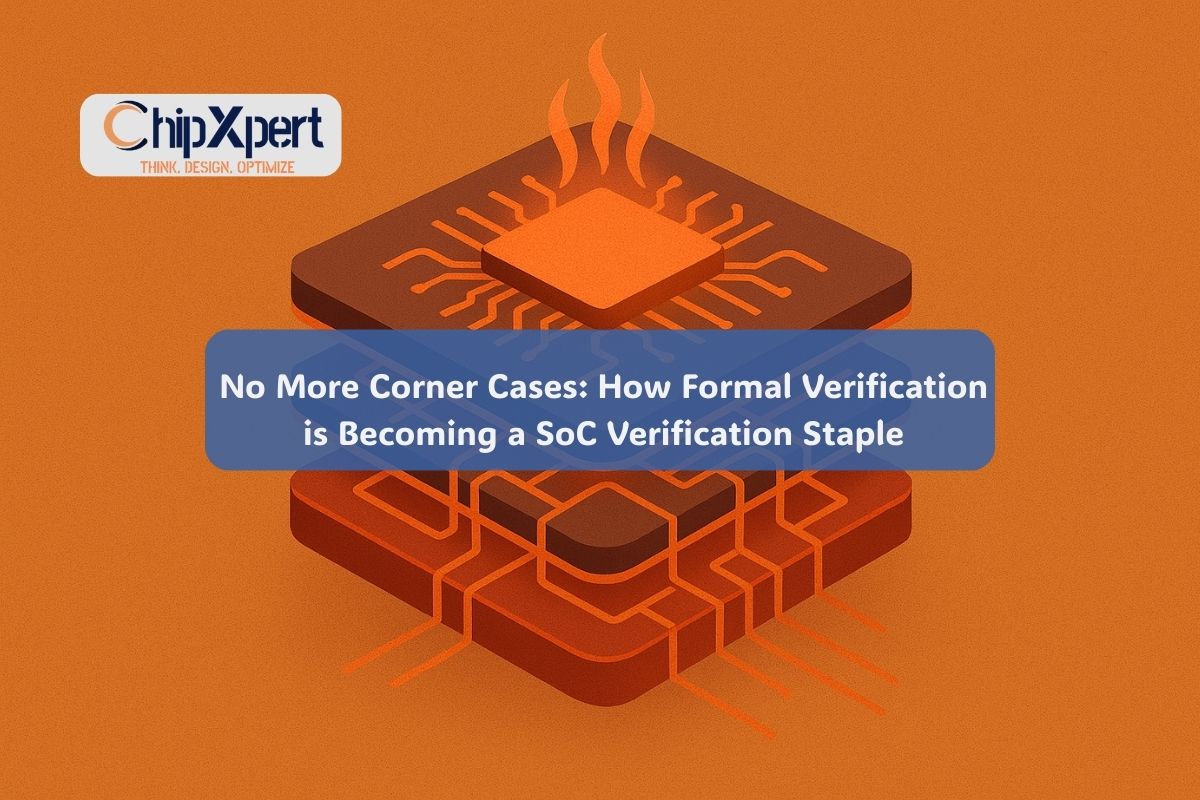The Vertical Frontier: Taming the Thermal, Power, and Design Challenges of 3D-ICs
The semiconductor industry’s relentless pursuit of Moore’s Law is taking a dramatic turn—upwards. Instead of just making transistors smaller, we are now stacking chips vertically, creating 3D-Integrated Circuits (3D-ICs). This approach promises unprecedented performance, massive bandwidth from die-to-die interconnects, and a radical reduction in footprint.
But with great power density comes great thermal responsibility. 3D-IC design isn’t just 2D design stacked higher; it’s a fundamentally new discipline with a unique set of formidable challenges. At ChipXpert, we’re dissecting these challenges to prepare the next generation of VLSI engineers for this 3D future. Let’s explore the big three: Thermal Management, Power Delivery, and System Partitioning.
The Paradigm Shift: From Planar to Vertical
In a traditional 2D chip, everything is on a single plane. In a 3D-IC, multiple thin dies (or “chiplets”) are stacked and bonded together using technologies like Through-Silicon Vias (TSVs) and microbumps. This vertical integration creates incredible interconnect density but also traps heat and complicates how we get power to each transistor.
Challenge 1: Thermal Management – The Furnace Effect
This is the most infamous challenge. Stacking active silicon layers creates a powerful, concentrated source of heat.
- The Problem: Heat generated in the bottom tiers has to travel through the layers above to dissipate. This creates severe thermal hotspots and significant temperature gradients across the stack. Excessive heat kills transistor performance and reliability.
- The Solutions:
- Advanced Materials: Using thermally conductive adhesives and underfills to help spread heat.
- Microfluidic Cooling: Integrating microscopic cooling channels directly into the silicon or interposer is an emerging, cutting-edge solution.
- Intelligent Design: Thermal-Aware Floorplanning is now non-negotiable. EDA tools must simulate thermal profiles to ensure high-power logic blocks aren’t stacked directly on top of each other. Spreading them horizontally across different tiers is crucial.
- Dynamic Management: Runtime techniques like Dynamic Frequency and Voltage Scaling (DVFS) are used to throttle power in over-heating areas, acting as a circuit’s “air conditioning” system.
Challenge 2: Power Delivery Network (PDN) – The Vertical Wire Act
Delivering clean, stable power to every transistor in a 2D chip is hard. In 3D, it’s a nightmare.
- The Problem: The Power Delivery Network must now navigate vertically through the stack via TSVs. These TSVs have resistance and inductance, causing IR drop and voltage noise that can be worse in the upper layers far from the package’s power source.
- The Solutions:
- TSV and Bump Planning: The placement of power TSVs and C4 bumps/µbumps becomes a critical part of early floorplanning. They must be abundant and strategically placed to minimize current path resistance.
- Decoupling Capacitance (Decap): Integrating decoupling capacitors is essential to suppress power supply noise. In 3D-ICs, Decap must be carefully distributed across all tiers to be effective.
- Backside Power Delivery: A revolutionary solution, where the power delivery network is moved to the backside of the wafer (e.g., Intel’s PowerVia), separating it from the signal interconnects. This is a game-changer for 3D-ICs, dramatically reducing IR drop and simplifying routing.
Challenge 3: System Partitioning – The 3D Jigsaw Puzzle
Deciding what functionality goes on which die is the most critical strategic decision in 3D-IC design. It’s a complex multi-objective optimization problem.
- The Problem: Should we split by function (e.g., logic on one die, memory on another)? Or by process node (e.g., 5nm CPU chiplet on top of a 12nm I/O chiplet)? Each choice has profound implications for performance, thermal profile, cost, and manufacturability.
- The Solutions:
- Performance vs. Thermal Trade-off: Placing frequently communicating blocks on adjacent tiers minimizes latency but can create thermal hotspots. Partitioning requires balancing interconnect performance against thermal dissipation.
- Heterogeneous Integration: This is the key advantage of 3D-ICs. You can integrate a bleeding-edge logic die with an older, cheaper, but highly reliable analog/RF die or a dense memory die (like HBM), each on its optimal process node.
- New EDA Tools: Partitioning is now a core feature of advanced EDA suites. Tools use ML and cost models to help architects explore thousands of partitioning scenarios, analyzing the PPA, thermal, and cost impact of each.
What This Means for the VLSI Engineer
Designing for 3D-ICs requires a massive shift in mindset. The engineer must now be a system architect who thinks in three dimensions from day one. It demands:
- Multi-Domain Expertise: Understanding the interplay between physical design, thermal dynamics, power integrity, and manufacturing.
- New Tool Flows: Mastering EDA tools capable of multi-die co-design, thermal-electrical co-simulation, and 3D static timing analysis.
- Collaboration: Working closely with packaging, product, and architecture teams in a truly holistic design process.
Build Your 3D-IC Expertise at ChipXpert
The industry is moving vertically, and the demand for engineers with 3D-IC skills is skyrocketing. This isn’t a niche anymore; it’s the future of high-performance computing.
At ChipXpert, our advanced VLSI curriculum is evolving to include these critical concepts. We provide the foundational knowledge of physical design, timing, and power that is essential to understand the new constraints and opportunities of 3D integration.
Ready to design in the third dimension? Explore our comprehensive VLSI courses and learn how to tackle the thermal, power, and partitioning challenges that define the next era of chip design.



